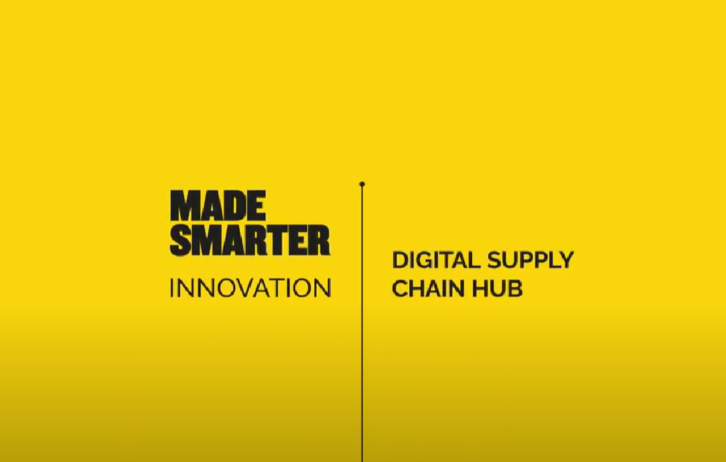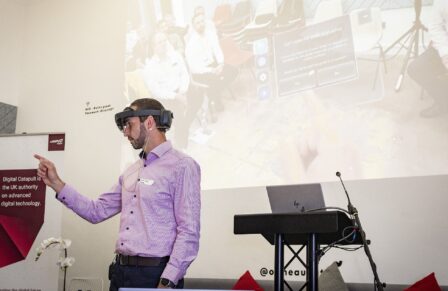Remote and autonomous machines will forever change these 5 major industries
Posted 7 Sep 2022
Remote and autonomous machines will forever change these 5 major industries
Paul Ceely, Director of Technology Strategy, Digital Catapult
From IoT, to 5G and artificial intelligence, we’re already seeing multiple advanced digital technologies converge, drawing the physical and digital worlds ever-closer.
Impact of this convergence will be felt most acutely in industry; revolutionising the way we design, plan, operate or deliver consumer facing products and services.
Amongst other trends in the cyber physical world – like the metaverse, or Digital Twins – the rise of remote and autonomous machines is a trend most businesses will need to take note of: in fact, Digital Catapult pinpointed robots and autonomous machines as a key trend for 2022 – with the projected global market size for robotics by 2026 coming in at a staggering £53.8 billion..
While the most well-known example of this trend is autonomous vehicles, the pandemic has led to increasing interest in advanced digital technology-enabled autonomous machines for other parts of the economy.
Here are my predictions for the five industries that will keenly feel the benefits of robots and autonomous machines:
- Manufacturing
Machine learning and artificial intelligence technologies will provide the power for automated systems, robotics and cobots (robots that can learn multiple tasks to assist humans) to help reduce cycle time, labour time, and quality errors. On a basic level, robots can even assist humans with ‘heavy lifting’ – as is becoming common in countries with an ageing population, like Japan.
Robots and autonomous machines are able to conduct the mundane, repetitive, physically demanding or even dangerous tasks that humans would otherwise have to do – providing workers with safer and better quality work to be more productive on the shop floor.
Exacerbated by the pandemic, we’ll also see a rise in manufacturers conducting work at a distance; Ford, for example, is just one company using immersive headsets and tools like the Microsoft Hololens to carry out remote meetings and training for their engineers.
The integration of these technologies enables and improves remote working, particularly whilst integrating new methods of connectivity like 5G. This will allow manufacturers to understand supply chains better, know the exact locations of specific operations and the impact it will have in the future.
Chris White Electrification and Global Engineering Alignment Manager, Ford Europe
2. Logistics and supply chain
In the longer term, we could see autonomous trucks or automated drones making deliveries to both urban and remote areas. In organisations like Ocado, we are already witnessing autonomous machines supporting picking and packing processes, and we will see these moving outside of the controlled warehouses, for example autonomous logistics information systems could carry out scans of product deliveries.
At the moment, for example, a trial at the Nissan factory in Sunderland is testing 5G’s ability to boost productivity through autonomous trucks to move parts. Find out more here.
3. Waste Management
With the human population generating around 2.12 billion tons of waste every single day, the effective use of automation to better manage resources and relieve the effects of the waste epidemic on our planet is critical.
Machine intelligence, artificial intelligence and computer vision is already allowing for the effective use of robots to identify, tag and sort large waste flows. There are also early examples of intelligent bins and containers, which can communicate with disposal systems or even drop off waste at a disposal site, that are growing in sophistication.
Currently, there is little to no visibility on waste composition at each stage of the waste flow. This makes it impossible for waste managers at material recovery facilities (MRF) and packaged-goods producers to take informed actions on optimising processes to increase recycling rates.
Our solution provides waste analytics and new insights previously unavailable to waste managers, producers, and regulators. As a result, it increases recovery rates, reduces the cost of manual sampling, enhances product quality, and informs on the waste being generated end-to-end.
Ambarish Mitra Co-founder, Greyparrot
4. Construction
The building site is a prime example of where tedious workflows can be automated, freeing up workers to take on other important tasks and sending company productivity skyrocketing. This is particularly impactful for remote and hard to reach construction projects, such as renewables particularly, where being about to do things remotely has an outsized impact.
Aside from tasks you may immediately think of, such as robots laying bricks or building foundations, an interesting example is remote systems and robotics being used to mix and lay concrete – saving companies time when ready-mixing concrete products.
5. Energy
There are countless places autonomous machines could add value in power generation and storage industries, with some of the most compelling examples standing out in the nuclear industry.
For example, the Robotics and Artificial Intelligence Hub is developing a robot for nuclear decommissioning, capable of accessing areas that are dangerous or inaccessible to humans, and equipped with lasers, cameras and radiation probes. Meanwhile, the RAICo1 centre in Whitehaven will be used by Sellafield to develop tech to decommission the plant.
In the power generation space, the UK Atomic Energy Authority (UKAEA) is even deploying robotic ‘snakes’ to service Britain’s future nuclear fusion reactors; the mechanical devices will slide around inside the walls of nuclear reactors to carry out essential repairs and maintenance.
The future of remote and autonomous machines
The opportunities for autonomous machines and robots to respond to some of the biggest challenges we’re facing as a society at the moment – whether economic, or social – are endless. At a time of seemingly never-ending skills shortages and recruitment challenges, these advanced technologies represent a tremendous opportunity for helping train up and assist employees in their day to day jobs, as well as freeing up valuable time for employees – allowing them to focus on improving their quality of work. I have mentioned five industries that will benefit significantly, but the list is by no means all-encompassing.
However, as the need for automation grows exponentially, we must ensure that we are working to improve accuracy, reliability, and security for these machines, particularly if they are operated remotely.



